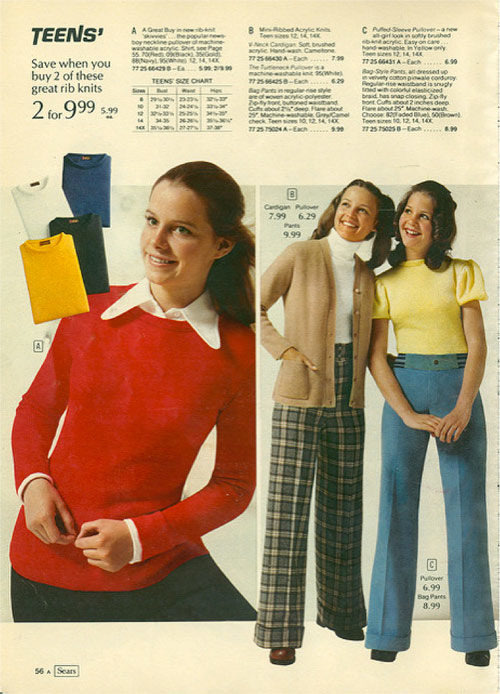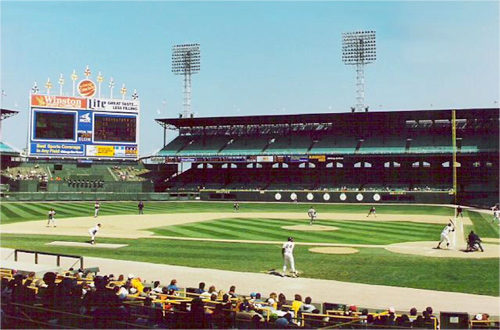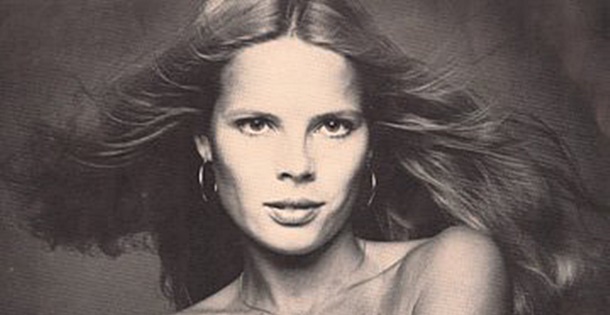For more about Gay Haubner’s life in the North Country, read the other chapters in her serialized memoir.
James and I were back in Chicago where I had found an agency that had agreed to take me on as the World’s Most Unlikely Model. I had stopped trying to style my hair after one disastrous experiment with hot rollers when I was reduced to having to use scissors to cut a curler out from a tangle of hair, I never understood what foundation was for, and I topped off at 5’3”. But according to Silver, the astrologer husband of Ann Geddes, who owned the eponymous modeling agency, my horoscope showed that I would be a great success.
The morning after Ann and Silver elevated me to Professional Model status, I left James holding his head in his hands and took the El to a lonely weird industrial area that lay in the shadow of the gigantic Merchandise Mart. Ann Geddes had sent me here in search of a photographer who would take photos of me for free — photos I could use to create a modeling composite that would land me actual work.
I found a dirty business card reading “Frank Wojtkiewicz, Photographer” stuck in a mailbox slot on one of the more crumbling buildings. There was no doorbell and no one around. I pushed open the rusty steel door and rode a creaky freight elevator up to the third floor. I banged on another steel door, which was thrown open by a big Polish bear of a guy, wearing a torn, grubby t-shirt and holding a can of beer.
Frank grunted, “A model, huh?” and led me into the first loft I had ever seen. In the front huddled a battered fridge (which held nothing but beer and film), a filthy sofa, and a rumpled mattress, glaringly lit by tall metal paned windows overlooking the Chicago River. In the back was Frank’s studio and darkroom.
No, I had no photos to show him, I was hoping that he could take some. Yes, I would like a beer (at 9:30 in the morning). Yes, I had modeling experience (well, I did have one modeling job, by accident). Would I do nude photos? I hesitated and answered truthfully that I didn’t know. I couldn’t think of a reason not to; after all a senior citizen from Des Plaines and a med student and his wife had all seen me naked.
Frank was gruff, unwashed on the outside, marshmallow heart on the inside, a wannabe Screbneski who lived on beer (I never saw him consume solid food), and who had no paying work at all. I don’t know how he stayed alive. But he had lots of time on his hands to shoot pretty girls who came knocking at his door.
Frank set me up under a huge white umbrella and then bustled about fiddling with a bunch of silver reflectors and a gigantic floor fan before shooting off a roll of film. He took a beer and the film into his darkroom and emerged with photos of me that were so flattering it was like looking at someone else.

Frank shot me like a sexy angel, my hair glowing behind me, my skin gleaming like a South Sea pearl, cheekbones I didn’t know I had sculpting my face.
“Wow,” I said, and Frank swaggered a little. It seemed churlish not to take off my shirt. Frank shot another role of film, and somehow these photos were even better. I used one of these photos, cropped below the collarbone that only Frank could find, as my head shot for years, arms crossed demurely over my chest, hair blowing back, wearing nothing but the dainty star necklace James had bought me in Acapulco.

I asked Frank if he could shoot the other photos I needed, to show off my range, my versatility: me holding a coffee cup or steno pad or tennis racket. “Bring beer,” he agreed. These photos were not as inspired, but they did demonstrate that I could stand in front of a camera and smile. I now had professional photos that had only cost me a few six packs. And I had made a new friend whose dirty loft provided a refuge from James’s days of fury.
Within a week, I had 1,000 black and white composites (which I paid for) imprinted with my name and “Represented by Ann Geddes Agency.” I was officially a model.
Which meant exactly nothing. Models from Ford and Wilhelmina were always cast for the most lucrative jobs, television commercials, and ads in national magazines. As the Number Two girl at the Number Three model agency, I was rarely sent off to auditions or go-sees. I sadly let go of my former belief that I would be starring in commercials once or twice a week. But I couldn’t sit and wait for the phone to ring. I needed money and I needed to get away from James and his foul desperation.
I wore out my shoes and my feet criss-crossing Chicago, dropping off my composite at every photographer on Ann’s list in the hopes that he (there was not a single female photographer) would be shooting something that required a small cute girl. I took the El north and south and tried to figure out Chicago’s arcane bus routes, but mostly I walked. I was not going to waste money on cabs.
Every evening I mapped out a route of photo studios and businesses and ad agencies, seeing how many I could hit on the least amount of carfare. My Chicago had previously consisted of a four-block square, extending from our Oak Street apartment to Faces disco to the backgammon club, with occasional trips to Marshall Fields downtown for Clinique lipsticks and Frango mints, or back in the good old days of a year ago, north to Greektown for moussaka.
Now I had to venture forth all over that sprawling city, from suburban Evanston, where I looked longingly at the ivied and brick campus of Northwestern, to close enough to the stockyards to smell them, from the skyscrapers of Miracle Mile to the scarred and scary South Side, previously terra incognita to me.
There was actually a lot of modeling work in Chicago. Sears and Spiegel were there; their tombstone catalogs required scores of models, posing in everything from bikinis to tool sheds. Popeil, famous for the Pocket Fisherman, churned out new low-budget commercials for dubious inventions every week. There were conventions and fashion shows that needed models who could talk or walk. Chicago had major ad agencies, like Leo Burnett and J. Walter Thompson, who very occasionally had to shoot a commercial there instead of LA or New York. There were smaller shops who cast models in trade ads for surgical or restaurant or hair salon supplies (I posed in scrubs and white paper booties, wearing a hair net, and brandishing a blow dryer). And of course there was the gaping maw of Playboy, which chewed girls up by the dozen.

Ann told me, “The more you work the more you work,” and it was true. Before I had gotten to the end of Ann’s list, a photographer cast me in an ad for Diet 7-Up, a shot of the lower half of my face behind a bubbling glass of clear soda, because I knocked on his door the day before, wearing a slash of crimson lipstick. That ad helped me land my second commercial, for the local McDonald’s franchises: I took bite after bite of an endless supply of slightly chilled Filets O Fishes, until the director got the take where the sandwich looked really, really good.
As my portfolio and demo reel filled up, I got more and more bookings, although I never made as much money modeling as I had waitressing at Pracna. I even got to walk the runway once, modeling petite-size wedding dresses, which inoculated me against ever wanting such a thing. All the gowns ended in huge, flowing trains of slippery white or ivory or eggshell satin; it felt like I was towing a small car. At the end of the runway I had to stop and beam like a real bride into the blinding lights, then execute an elegant turn, somehow without stepping on my own train, falling off the runway or colliding into the model behind me.
There were some jobs I should not have taken: greedy for my day rate ($250!) I let my hair be cut in a goofy Dorothy Hamill wedge for a beauty school instructional film, which put me hors de combat till it grew out.
Tri-State Honda hired me to throw out the first ball at the White Sox’s Comiskey Park, after I lied twice: I claimed that I knew how to ride a motorcycle and that I owned a floor-length white dress. I bought the cheapest white polyester gown I could find; my plan was to wear the dress to the ball game, with the tags carefully tucked in, and then return it to the store the next day and get my $50 back.

The nice man who delivered the Honda motorcycle to Comiskey Park gave me a quick lesson, slapped me on the butt, yelled “You’ve got it girlie!” and sent me off across the field to the pitcher’s mound. I managed to not dump the motorcycle or run over any White Sox, and actually threw the ball in the direction of home plate. But my white dress didn’t fare as well: there were greasy black oil stains all over the skirt.
Not only was I out $50 on a dress I could never wear again, Tri-State Honda didn’t pay up. The Ann Geddes Agency was not very good at bill collecting.
“I sent them an invoice.”
“Ann, can you send them another?”
“I will, after 30 days.”
Thirty days later.
“Tri-State Honda still hasn’t paid? Ann, please call them!”
“I’ll call after 30 days.”
Seething, I took my anger and frustration and a six-pack of Budweiser to Frank’s loft.
“It’s not fair!’ I cried. “And Ann isn’t helping. Honda is this big company, with all these motorcycles, and they’re taking advantage of me!” I struck my best Little Nell pose. “It’s not about the money, it’s the principle!’
“Oh, it’s about the money,” said Frank. His jaundiced take was that Ann didn’t want to piss anybody off. They were the number three agency in Chicago, and didn’t want a reputation for hounding clients over what was $10 for them. If I wanted my money, I had to get it myself. Frank had an idea; we smoked a joint of very good weed and he told me what to do.
I put on that oil-besmirched dress and went back to Tri-State Honda’s offices armed with several cans of Reddi-Whip. I told the befuddled receptionist that I was the Tri-State Honda White Sox girl and they owed me $100. If I did not get paid immediately, I was going to enjoy some Reddi-Whip, and in the process would most likely get whipped cream on the reception area’s couch and carpet. I assured her that it was very hard to get the smell of soured milk out of fabric. I sat on the couch, removed the red cap, and tilted the nozzle towards my mouth.
Frank was certain this would work, as he had once convinced a would-be model to be photographed wearing nothing but whipped cream and ended up having to toss out his sofa; I guess the stink of old dairy overwhelmed the ever-presence aroma of spilled beer in his loft.
“Can’t they arrest me?” I worried. “Probably not for Reddi-Whip,” said Frank.
The receptionist picked up the phone and the man who had hired me rushed out. I adjusted the nozzle so it pointed away from my mouth and towards the couch. “I’ll get your check,” he yelled.
Unfortunately, that $100 check was made out to the Ann Geddes Agency, leaving me $90 minus the dress and my El fare to and from Comiskey Park.
Frank was right. It was about the money. James’s good days were getting farther and farther apart. Even in those rare times when he was feeling flush again, it was hollow, as if he were acting the part of the old, confident James, the man of the world, successful investor and drug smuggler, the gambler who beat all the odds. I needed money: I had to bulk up my escape fund.
Become a Saturday Evening Post member and enjoy unlimited access. Subscribe now




Comments
Another great chapter! I wish i had a video of you in the long white dress on the Honda. I can only imagine what you were saying under your breath! You have led such a fun and adventurous life with so many twists and turns, the little village of Puerto Viejo must seem quite tame!
I can’t get over any of this. I mean, obviously you were a model. You’re stunning – clearly, you always were.
But you hooked up with Ann Geddes. Not THE Anne Geddes – but a whole other Ann Geddes. Working in the photography industry. How?? How does this happen??
You threatened Honda with whipped cream over $100?? How does this happen??
You cut your hair into a bowl cut?? HOW DOES THIS HAPPEN????
I love all of this – can’t wait to read about how you finally escaped Chicago!!
It seems Silver and Ann knew what they were doing when they sent you to Frank’s loft. Despite the run down, kinda creepy factor at first, the photos speak for themselves. I’m sorry you had to wear yourself out trying to get work though, but you persevered and got some decent gigs. 7-Up, McDonald’s; not too shabby!
The runway model part looks difficult to me, even though it’s not supposed to. Trying to walk “normally” in that manner I see of the left leg going so far to the right, then the right leg going so far to the left looks uncomfortable (if not dangerous) especially in high heels. Geez!
Getting to throw the first ball for the White Sox sounded like it could have really raised your profile. Shame on Tri-State Honda for not paying you and forcing you to resort to drastic measures—–involving the Reddi Whip! I’m sorry the check you finally got was bungled. Realistically you should have been paid a few hundred MORE for all you had to go through Gay, seriously!
I’m sorry James was having such a hard time of it, but at this point you just have to wish him well, and leave his downward spiral to get where you need to be. Unfortunately it IS about the money, honey. It’s not fair, but things in life rarely are. Continued life with James would have meant more crime, and (if you live through it) likely serious time for the both of you.
Another great yarn! I once dumped a 50 pound sack of nuts on an ad agency’s desk for basically the same reason. You had more success. How’s the inventory of Reddi Whip in Costa Rica?
I can just see and hear (and smell) that rusty old freight elevator and the photographer’s loft. Great imagery! And the runway gig, yes! People have no idea how difficult it is.
Hah! I am laughing at the image of you threatening with ready whip!